Pawscessories is reader-supported. When you buy via links on our site, we may earn an affiliate commission at no cost to you.
Learn more.
F1 Labradoodles have become a very popular dog breed in recent years. However, there are several generations of Labradoodles, and it can be confusing to know which one is right for you.
Labradoodles are a cross between Labrador Retrievers and Standard Poodles. They are known as designer dogs or hybrid dogs.
Labradoodles are known for their adorable teddy bear-like appearance, intelligence, and temperament. They are also primarily hypoallergenic, which is a big plus for people with allergies.
If you’re looking for a Labradoodle, you have likely noticed different naming conventions. For example, you may have seen F1, F2, F1B, and other variations.
What does this mean? What is an F1 Labradoodle?
This blog post will cover the F1 Labradoodle generation in detail and compare it to some other generations. We will also discuss the F1 Labradoodle’s physical appearance, size, colors, temperament, and other frequently asked questions.
Let’s dive in.
Table of Contents
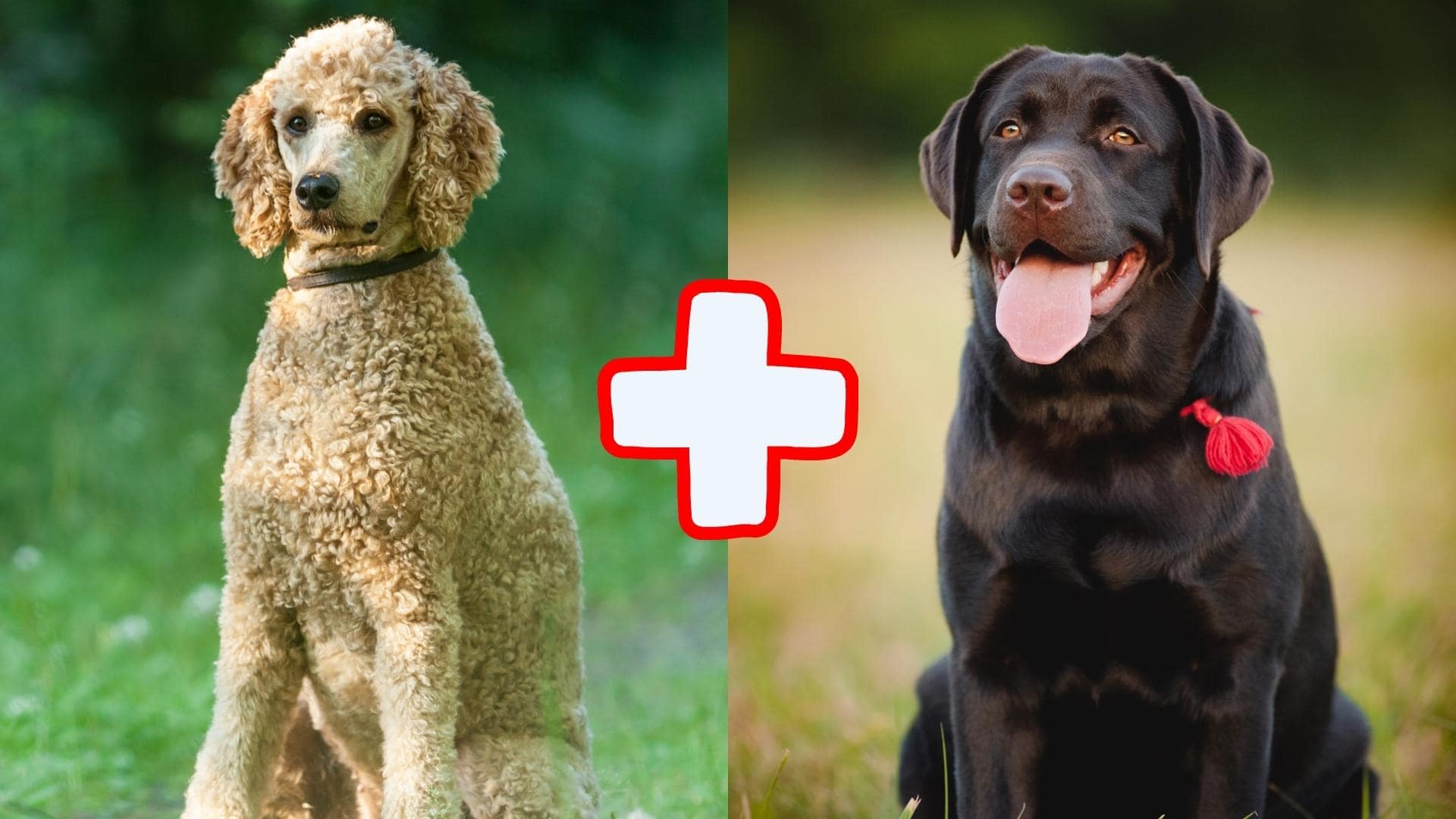
Labradoodle Generations
There can be a lot of confusion surrounding the different generations of Labradoodles.
However, to understand the different generations, we must first understand what an F-generation is.
What Does The “F” In Labradoodle Generations Mean?
The “F” in the Labradoodle generations stands for a filial hybrid. Filial is defined as the first generation of offspring from two different purebred parents.
In other words, an F-Labradoodle is the result of breeding a Labrador Retriever with a Standard Poodle. This is considered the original Labradoodle cross.
The f can also be interpreted as the “foundation” generation. All other generations of Labradoodles are based on this original cross.
Any number following the f, such as 1 or 2, refers to the generation number. So F1 would mean generation one and F2 generation two.
Now, if there is also a letter “B,” this refers to a backcross. So, for example, an F1B Labradoodle is the first-generation backcross. In addition, F1BB would be considered a first generation backcross of a backcross.
Kinda confusing, but I will break it down for you generation by generation.
What is An F1 Labradoodle?
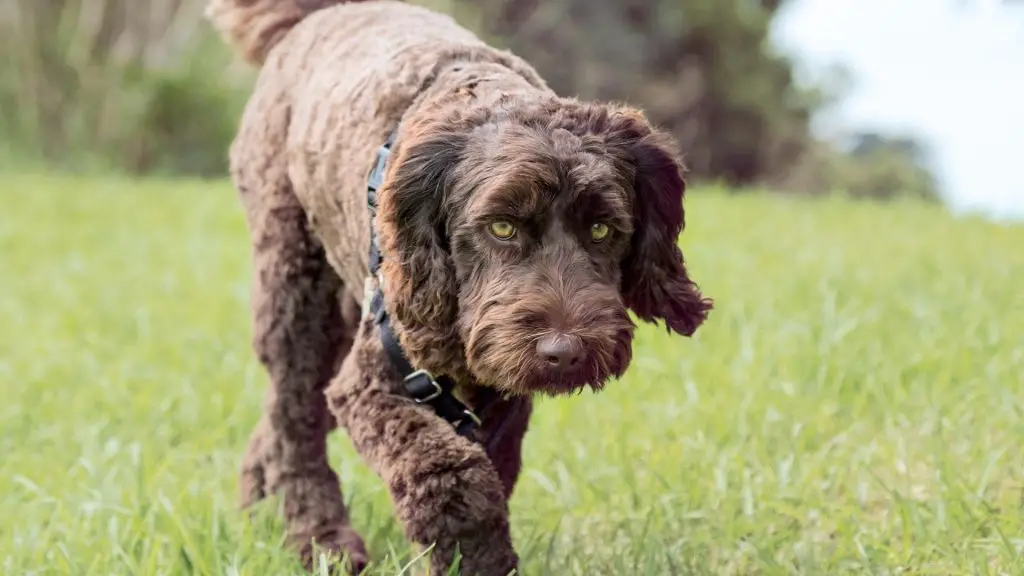
An F1 generation Labradoodle also referred to as the first cross-generation, is a cross between a purebred Labrador Retriever and a purebred Poodle.
This means they inherit 50% Poodle genes and 50% Labrador genes.
However, these genes can express themselves in many different ways. This is why the F1 Labradoodles’ appearance is almost impossible to predict.
In addition, some breeders will use miniature Poodles, toy Poodles, or standard Poodles to make Labradoodles. This adds more variation to the mix.
More on the F1 Labradoodle’s appearance, size, temperament, etc., can be found below.
What is An F1B Labradoodle?

An F1B Labradoodle is the first-generation backcross.
In other words, it is bred from an F1-generation Labradoodle and a purebred dog (either a Poodle or Labrador in this case).
So an F1B Labradoodle could be either 75% Poodle genes and 25% Labrador Retriever genes or vice versa.
This, of course, depends entirely on which of the two purebred dogs were selected. However, the most common F1B Labradoodle is the 75% Poodle and 25% Labrador.
This is because the added 25% Poodle genes help to reduce some of the negative traits of the F1 generation, which usually stem from the Labrador parent.
The backcross generations are supposed to help reduce some negative traits that F1-generation Labradoodles are known for, such as shedding.
However, F1B-Labradoodles can still inherit some F1-generations traits, so there’s no guarantee that your dog will be non-shedding.
Backcrosses just help to intensify certain traits and ensure a little stability.
F1BB Labradoodles
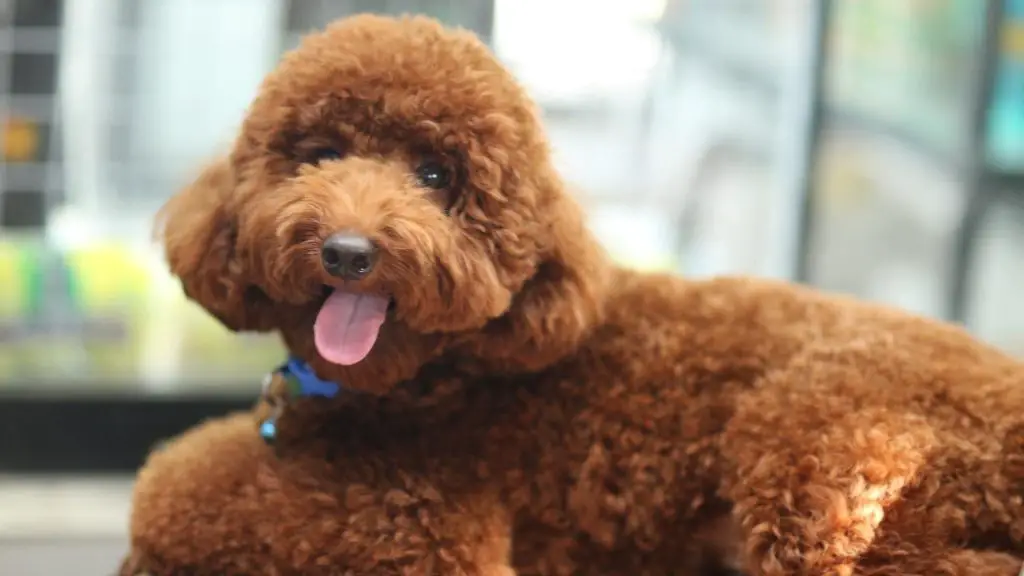
The F1BB Labradoodles are basically a double backcross. In other words, an F1B Labradoodle is bred with a Poodle or Labrador (usually a Poodle though).
This leaves the breed with 87.5% Poodle genes and 12.5% Labrador genes.
And just like the purpose of the F1B generation, the F1BB-Labradoodles also exist to further reduce what some people claim to be “negative traits” of F1-generation Labradoodles.
However, since the F1BB takes mostly after the Poodle, these dogs can look almost identical to a Poodle. This can take away from Labradoodle’s unique appearance.
What is An F2 Labradoodle?
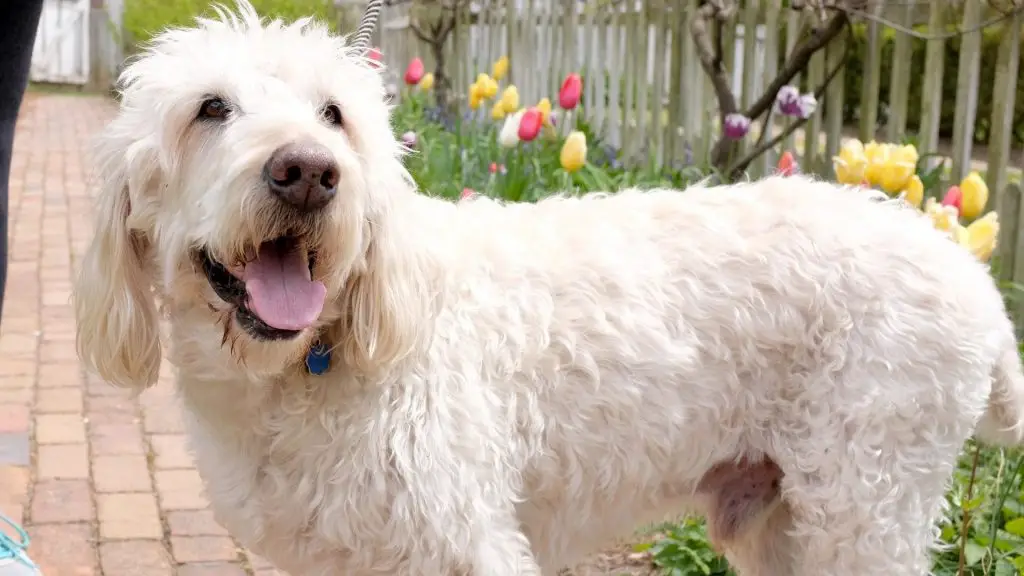
An F2 generation Labradoodle also referred to as the second cross-generation, is a cross between two F1-generation Labradoodles.
This means an F2 Labradoodle is bred with two Labradoodles, both 50% purebred Labrador and 50% purebred Poodle.
This results in a Labradoodle with the same genetic makeup as an F1-Labradoodle.
However, the F2-Labradoodles are even more unpredictable than the F1 Labradoodles.
You are basically rolling the dice when getting an F2-Labradoodle.
What is An F2B Labradoodle?
An F2B Labradoodle is a second-generation backcross. However, this is where things change a bit. It’s not as simple as just backcrossing an F2 Labradoodle.
An F2B Labradoodle is bred from an F1 Labradoodle with an F1B Labradoodle.
In other words, an F2B Labradoodle is 37.5% Labrador Retriever and 62.5% Poodle. This breed will keep many Poodle genes, but the puppies will appear more like Labradoodle than purebred Poodles.
F2BB Labradoodles
The F2BB Labradoodles are another backcross made with a backcross. Meaning they are bred from F2B Labradoodle and a purebred Poodle.
The F2BB generation Labradoodle is very similar to the F1BB generation but with slightly less Poodle.
These dogs are very hard to come across as most breeders will stop at F1B.
These are technically considered fourth-generation Labradoodles, which take a lot of time and effort to reach.
The benefits of this generation of Labradoodle just aren’t really there either. With the amount of Poodle genes, they usually end up looking like Poodles.
What is An F3 Labradoodle?
The last Labradoodle generation I will mention is the F3.
An F3-generation Labradoodle is the first of many multi-generation Labradoodles. Multi-gene Labradoodles can be called f4, F2BB, and many others.
The F3 Labradoodle is 50% Poodle and 50% Labradoodle. At this generation level, the appearance of the offspring should be easier to predict.
F1 Labradoodle Dog Appearance & Build
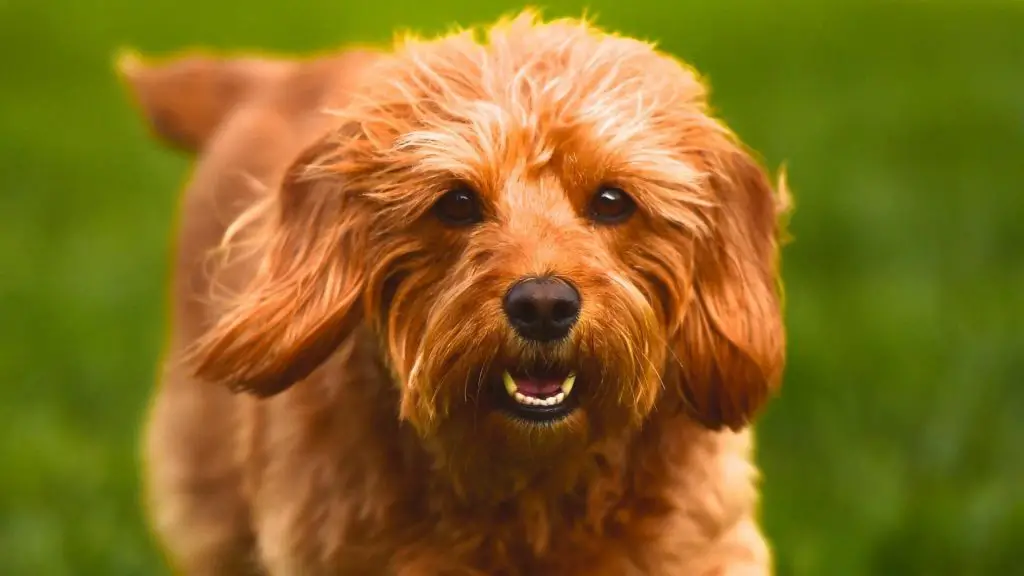
Since the F1 Labradoodle is 50% Poodle and 50% Labrador, its appearance will depend on which parent it takes after.
An F1-generation Labradoodle can be curly like the Poodle, wavy like the Labrador, or anywhere between.
The coat of an F-generation Labradoodle is usually medium to long and can be either hypoallergenic or non-hypoallergenic.
The most desirable Labradoodle will have a round face, floppy ears, and a non-shedding coat. Its muzzle should be slightly longer than the skull and taper to a point.
The F1 Labradoodle can also have a Labrador-like build with a deep chest and muscular legs.
F1 Labradoodle Size (Weight & Height)
The F1 Labradoodle can come in three different sizes depending on the Poodle used for breeding.
Poodles come in three distinct sizes: the standard, Miniature, and toy Poodle. So this can play a role in the size of the F1 Labradoodle.
However, when it comes to predicting an F1 Labradoodles size is practically impossible. It’s not until the backcross generation (like the F1B) that size can be more accurately estimated.
Here are some of the common sizes for F1 Labradoodles:
Standard F1 Labradoodle
The standard F1 Labradoodle comes from breeding a Labrador Retriever with a Standard Poodle.
A standard F1 Labradoodle can range from 21-24 inches (53-61 cm) and can weigh 50 to 65 pounds.
Medium F1 Labradoodle
The medium F1 Labradoodle comes from breeding a Labrador Retriever with a Mini or Toy Poodle.
A medium F1 Labradoodle can range from 17-20 inches (43-51 cm) and can weigh 30 to 45 pounds.
Mini F1 Labradoodle
The mini F1 Labradoodle comes from breeding a Labrador Retriever with the smallest Toy Poodles.
A mini F1 Labradoodle can range from 15-16 inches (38-41 cm) and can weigh 15 to 25 pounds.
F1 Labradoodle Coat Colors & Texture
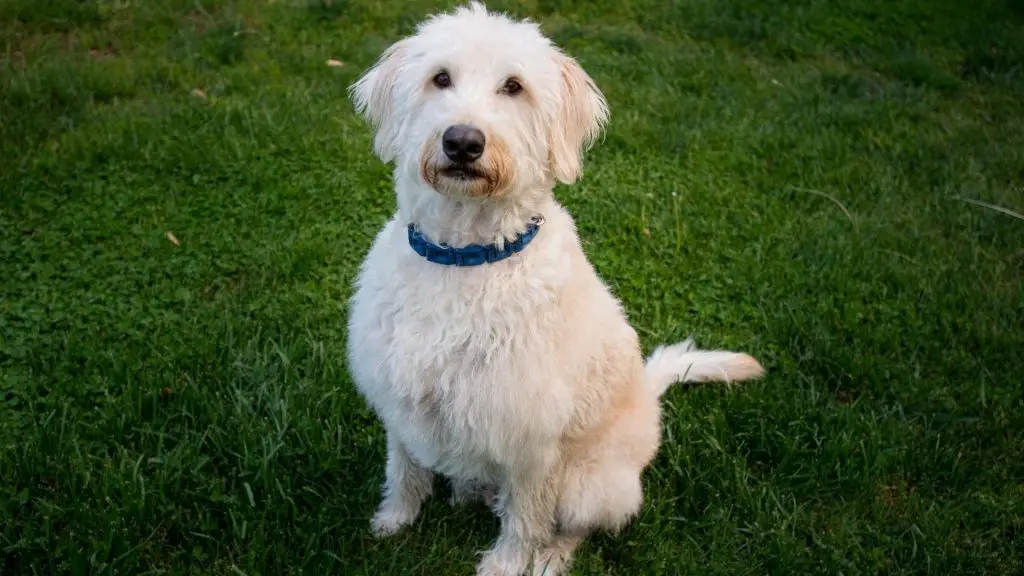
The F1-generation Labradoodle can have a wide variety of coat colors and textures.
Here are some of the most popular F1-generation Labradoodle coat colors:
- Brown
- Black
- Chocolate
- Cream
- Chalk White
- Gold
- Red
- Silver
- Gray
In addition to these colors, they can also have all sorts of coat patterns like brindled, Merle, parti-colored, and more.
The F1 Labradoodle can also have a wide variety of coat types and textures. The most common types are wavy, curly, or straight. And the most common textures are wool, fleece, and hair-like.
The most adored is the curly coat with a wool or fleece texture. This is partly because it’s also non-shedding and hypoallergenic.
F1 Labradoodle Shedding & Grooming
When it comes to shedding the F-generation Labradoodle can go either way. It depends on which parent they take after more, the Poodle or the Labrador.
Poodles are known for being non-shedding, while Labrador Retrievers are moderate shedders. So an F1-generation Labradoodle could be a light to non-shedder or a moderate shedder.
Regarding grooming, some F1-generation Labradoodle may need more maintenance than others.
Poodles need to be professionally groomed every few months, while Labrador Retrievers don’t really need to be groomed.
So depending on which coat is inherited by the F1 Labradoodle, the amount of brushing and hair cutting will differ.
As for bathing, teeth cleaning, ear cleaning, and nail trimming, all F1 Labradoodles will have similar needs. Cleaning and trimming should be done when needed, which for most Labradoodles will be every few weeks.
Do F1 Labradoodles shed?
First and foremost, there is no such thing as a non-shedding dog. All dogs, even hypoallergenic dogs, shed to some degree.
How much an F1 Labradoodle sheds depends on the coat type they inherit.
If the F1-generation Labradoodle has a Labrador Retriever coat, they will be low to medium shedders.
However, if the F1-generation Labradoodle has a Poodle coat, they will shed very little. Therefore, most people would consider them non-shedding dogs.
Lastly, they could also fall in the middle between these two coat types and shed a moderate amount.
Are F1 Labradoodles Hypoallergenic?
For an F1 Labradoodle to be hypoallergenic, it must take more after the Poodle parent.
Most people think it’s hair that causes allergies. Still, it’s really the dander and saliva that a dog produces that can cause allergies.
So, if an F1-generation Labradoodle has a Poodle coat, they will have less dander and produce lower levels of allergens.
This means if an F1 takes more after the Poodle, it will cause fewer allergic reactions. Whereas an F1 Labradoodle with more Labrador may cause allergic reactions.
Further Readings: 13 Best Labradoodle Shampoos: Deep Dive on Top Brands
F1 Labradoodle Lifespan
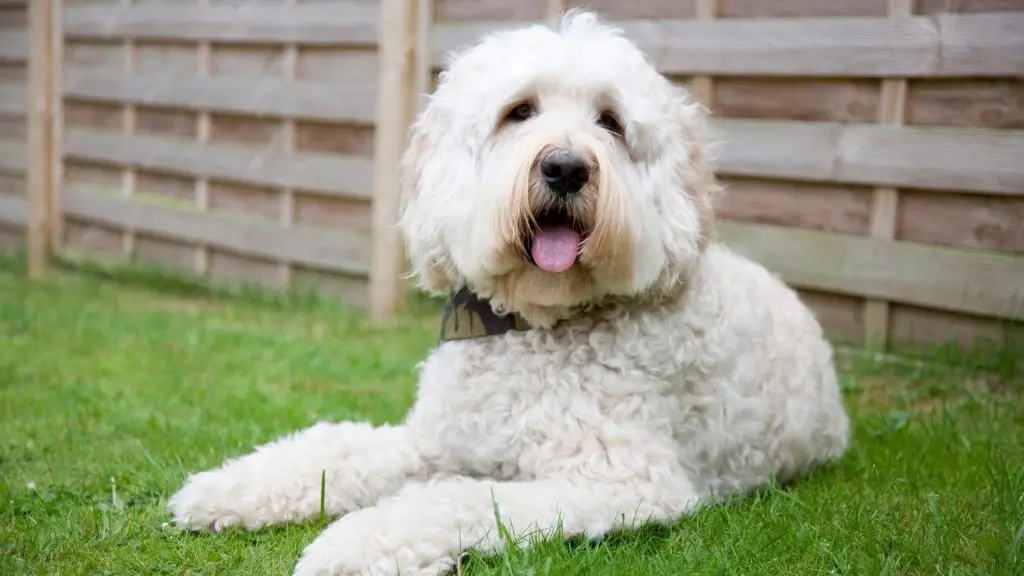
The F1 Labradoodles lifespan is typically around 12-14 years.
This is the average lifespan for most dog breeds. In addition, what generation of Labradoodle they are or which parent they take after more does not change their lifespan.
However, these dogs will often live slightly longer if they are made with miniature or toy Poodles. So you might get an extra year or two out of them.
F1 Labradoodle Common Health Issues
Mixed dog breeds like the F1 Labradoodle are often considered healthier than their purebred counterparts.
For some mixed-breed dogs, this is not always. It really depends on the breeders.
Those healthier inherit the best traits from both parents and avoid genetic health issues that might be common in either breed.
However, F1-generation Labradoodles are still susceptible to some health problems.
Here are some common health concerns:
Hip & Elbow Dysplasia
Hip and elbow dysplasia are both hereditary joint conditions that can be passed down from parent to pup.
They are both degenerative diseases that can cause pain and mobility issues later in life.
The best way to avoid these health problems is by buying from a reputable breeder who health tests their dogs for hip and elbow dysplasia.
Progressive Retinal Atrophy
Progressive retinal atrophy (PRA) is a degenerative eye condition that eventually leads to blindness.
PRA is an inherited condition that usually starts to show symptoms around the age of four.
There is no cure for PRA, but there are ways to manage it and make your dog comfortable.
Again, the best way to avoid this health problem is by buying from a reputable breeder who health tests their dogs for PRA.
Von Willebrand’s Disease
Von Willebrand’s disease is a blood clotting disorder caused by a deficiency of the von Willebrand factor.
This protein is essential for blood clotting; without it, dogs can bleed to death from even a small cut.
Von Willebrand’s disease is hereditary, and there is no cure for it.
However, it can be managed with medication, and many dogs with von Willebrand’s disease live long and happy lives.
F1 Labradoodle Trainability & Intelligence
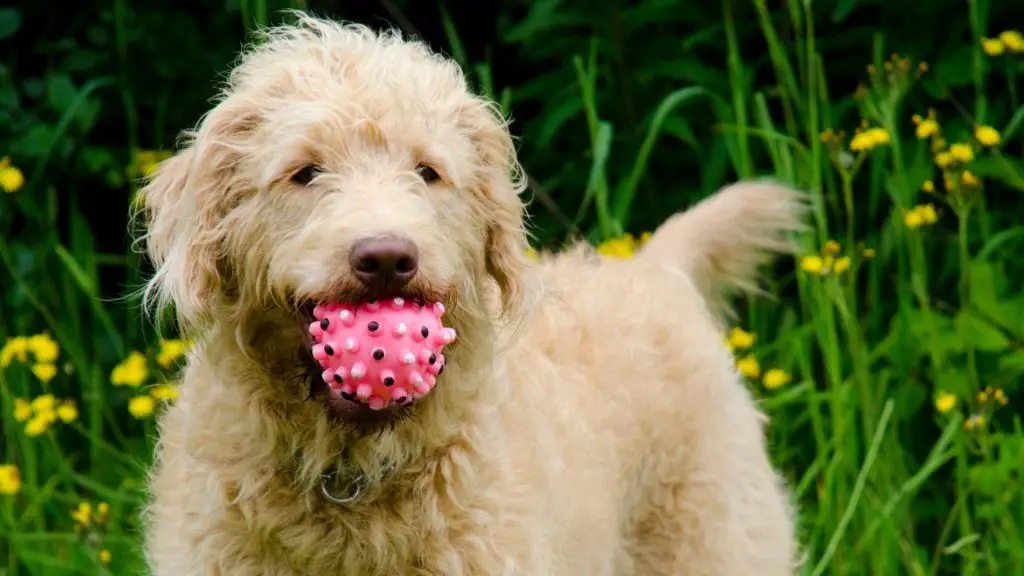
The F1 Labradoodle is a very intelligent dog breed. They are easily trainable and love to please their owners. This makes them the perfect family pet, as they are good with children and other pets.
They are also a great choice for first-time dog owners.
Suppose they have more of the Poodle parent in them. In that case, F1-generation Labradoodles will be easier to train as Poodles are one of the most intelligent dog breeds.
However, the Labrador parent can make them a little more stubborn and difficult to train.
But, with patience and consistency, most F1 Labradoodles will be able to learn most things you want to teach them.
F1 Labradoodle Activity Level & Exercise Needs
The F1-generation Labradoodle is a highly active dog that loves to play and run around. They need a lot of exercise, and if they don’t get it they can become bored and destructive.
A daily walk is not enough for this breed. They need at least one hour of vigorous exercise every day. This can be in the form of a run, hike, or playtime at the dog park.
They do best in homes with large yards where they can run and play.
Make sure to offer them plenty of exciting toys and puzzles to keep their minds occupied.
F1 Labradoodle Temperament & Behavior
The F1 Labradoodles are smart, loveable dogs that enjoy following commands and completing tasks.
Another advantage of choosing a Labradoodle is they can be an excellent service and therapy dog.
F1 Labradoodles are intelligent, kind, and loving with people, making them suitable for everyone, from first-time dog owners to those with a home full of kids.
They are easy-going, low-maintenance dogs (aside from their coat) who enjoy being with their human families.
They can develop separation anxiety if they are left alone for lengthy periods.
This might appear in various ways, including barking, howling, pacing, urinating in the home, and destroying furniture.
Do F1 Labradoodles Bark A Lot?
The F1 Labradoodle is considered a low to moderate barker. Still, they tend to bark for a purpose, not just because they feel like it.
They will bark when they want something, such as to go outside or to get a toy.
They may also bark to warn you of something, such as an intruder or another animal.
However, with proper training, you can correct any excessive barking behavior.
Do F1 Labradoodles Like To Cuddle?
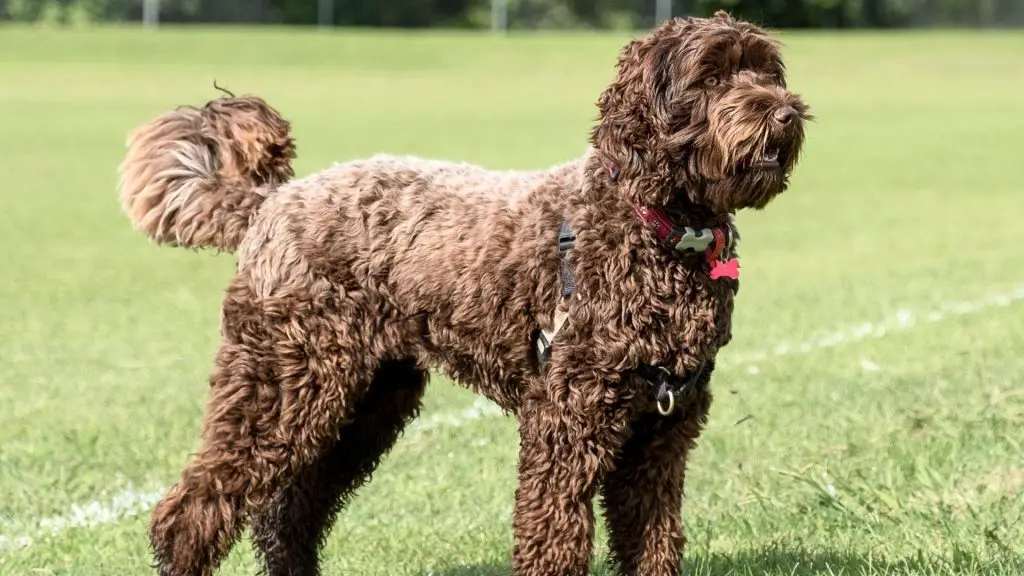
The F1-generation Labradoodle is a loving and affectionate dog who loves to cuddle with humans. So if you are looking for a dog that will be your best friend and provide you with endless love, the F1-generation Labradoodle is a great choice.
Are F1 Labradoodles Good With Kids?
F1-generation Labradoodles are great with kids! They are gentle, loving, and patient, making them the perfect playmate for your children.
All dogs still require proper socialization and training. Still, Labradoodles learn how to interact appropriately with kids of all ages rather quickly.
Are F1 Labradoodles Good With Other Dogs?
F1-generation Labradoodles tend to love other dogs and be social with them. They are extremely dog friendly and would love a home with another dog to play with.
As with all dogs, they will still need training and socializing to learn how to play and interact properly.
Are F1 Labradoodles Good With Strangers?
F1-generation Labradoodles are generally friendly with strangers. They will greet guests with a wagging tail and excitement.
Labradoodles are social, friendly dog that thrives on companionship.
Are F1 Labradoodles Good Apartment Dogs?
The F1-generation Labradoodle is not the best choice for an apartment dog. They are highly active and need a lot of space to run and play.
Without enough exercise, they can become bored and destructive. This can be a nightmare for neighbors nearby.
However, you can still make it work if you are dedicated to exercising them and making sure to meet their needs.
They do best in homes with more space and areas where they can run and play to their heart’s content.
F1 Labradoodle Food & Diet
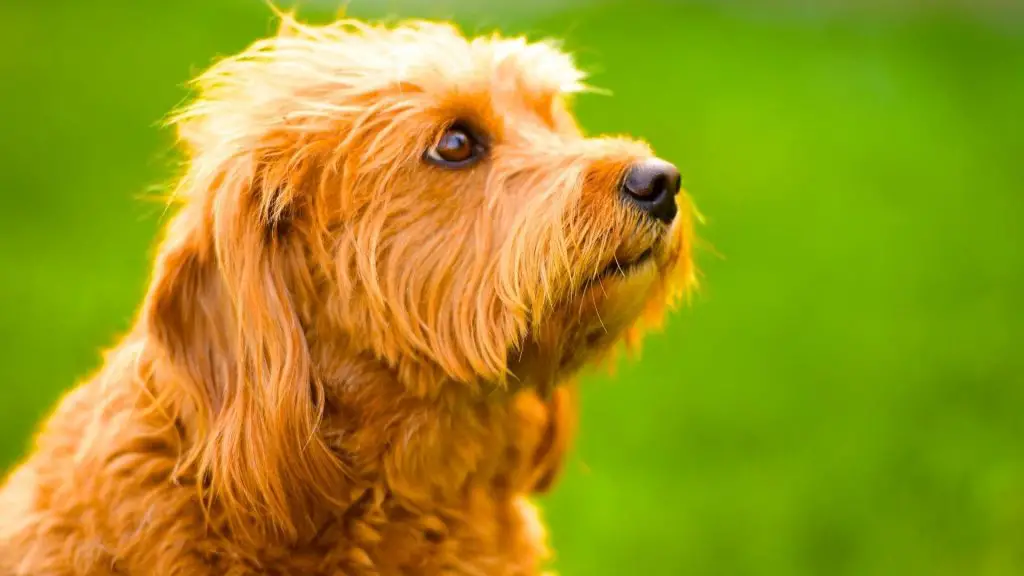
The F1-generation Labradoodle is a high-energy dog that needs a diet to match.
They require food that is high in protein to help them maintain their energy levels throughout the day.
A good quality dry kibble or wet food will work well for this breed.
Its recommended that this breed eats 1 – 2.5 cups of high-quality dry food 2 times daily.
However, how much each F1 Labradoodle needs to eat depends on size, age, build, metabolism, and activity level.
Plus, each dog may have different allergies and food preferences. Dogs are individuals, so they shouldn’t all eat the same food.
This is why speaking with your vet about the best diet plan for your dog is always best.
My father, Dr. Littlejohn, and our head veterinary consultant recommend these four brands above all else:
What Is The Price Of An F1 Labradoodle?
The Average F1 Labradoodle price is roughly $1,200 to $3,000. Prices vary depending on the breeder, coat type, generation, size, color, and eye color.
Prices are also affected by whether the dog is pet quality or show quality.
But the main factors that affect price are the quality of the breeder and the puppies’ parents.
For example, if you have an award-winning dog breed with another award-winning dog, their puppies would be very expensive.
If you notice a breeder selling really cheap F1 Labradoodles, be careful. Always make sure you are getting your Labradoodle puppy from a reputable breeder.
Many unscrupulous breeders out there are looking to make a quick buck by selling sick or unhealthy Labradoodle puppies.
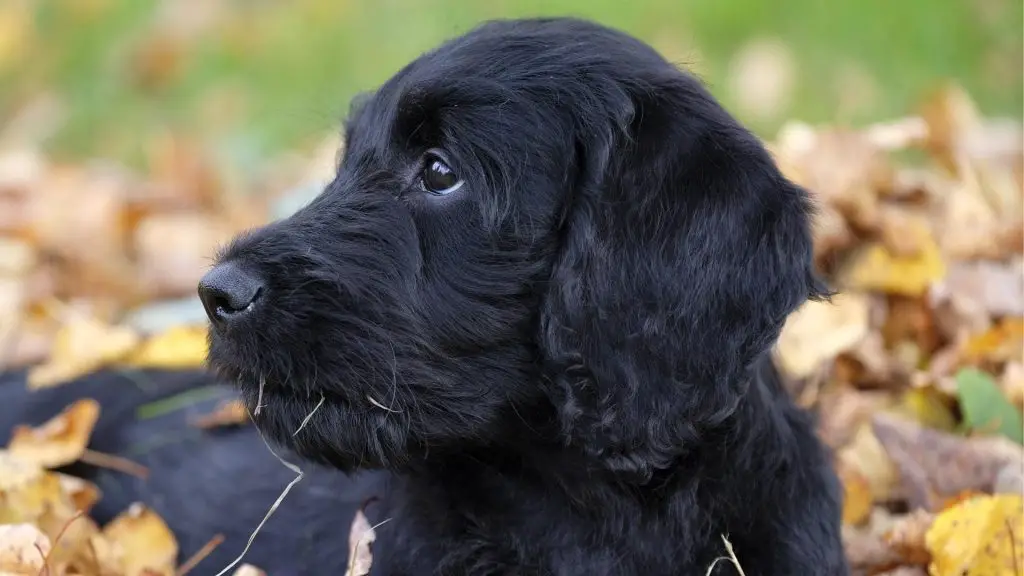
Where Can You Buy A F1 Labradoodle?
If you are looking to buy F1 Labradoodle puppies, we recommend only buying from a reputable breeder.
There are many fakes, scams, and poor-quality breeders out there. Do your research to ensure you get a healthy puppy from a good breeder.
Since every location is a little different, here are some places you can start looking are:
- https://puppyfinder.com/
- https://puppies.com/
- https://marketplace.akc.org/puppies
F1 Vs. F2 Labradoodle Which Is Better?
When comparing the F1 and F2 Labradoodles, you must consider what you want in your dog.
Determining which is better depends on preference and which dog matches your lifestyle best.
Generally speaking, the F2 Labradoodles have more randomization in their litter compared to the F1.
So, generally speaking, it’s better to pick the F1 Labradoodle over the F2. With an F2 Labradoodle, you cannot be confident about the puppy’s traits or appearances.
In fact, most breeders are aware of this inherent randomness and don’t even bother breeding them.
F1 Vs. F1B Labradoodle Which Is Better?
When comparing the F1 and F1B generation Labradoodles, most consider the F1B generation to be better.
This is because the F1B generation is a cross between the F1 Labradoodle and a purebred Poodle.
Therefore, the F1B Labradoodle has a higher percentage of Poodle in them, around 75% Poodle and 25% Labrador.
This makes them more predictable in terms of their physical appearance and temperament. Also, It means you basically have a guaranteed low-shedding, hypoallergenic dog.
The biggest downside to the F1 Labradoodle is the variation and lack of predictability of the offspring.
The F1 and F1B generations are both going to produce fantastic dogs. Still, if you are someone who suffers from allergies, the F1B Labaradodle will be best.
If you don’t have allergies, don’t mind shedding, and want a little extra Labrador in your dog, then the F1 Labradoodle might be the better choice.
Final Thoughts
All in all, the F1 Labradoodle is a fantastic dog.
They are great for active families, first-time dog owners, and anyone looking for a friendly, affectionate companion.
The F1 Labradoodle is a versatile breed that can do well in almost any climate and environment. So long as you can keep up with their high energy and active lifestyle.
This tremendous all-around dog is sure to bring joy to your life.
Other posts you might find interesting:
Mini Bernedoodle: Size, Temperament, Price, Shedding, & More
Australian Shepherd Rottweiler Mix (AKA The Aussie Rottie Mix)
